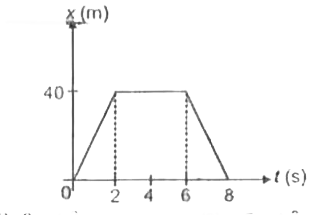A particle move a distance x in time t according to equation x=(t+5)−1. The acceleration of particle is proportional to.
(Velocity )3/2
(Distance)2
(Distance )−2
(Velocity )2/3
The correct Answer is:A
x=1t+5⇒v=dxdt=−1(t+5)2
Accerleration ,a=dxdt=2(t+5)3
⇒a∝(velocity )3/2
Similar Questions
A particle move a distance x in time t according to equation x=(t+5)−1. The acceleration of particle is proportional to.
View SolutionA particle moves according to the equation t=ax2+bx, then the retardation of the particle when x=ba is
View SolutionA particle moves according to the equation x=acosπt. The distance covered by it in 2.5 s is
View SolutionThe displacement x of a particle along a straight line at time t is given by x=a0+a1t+a2t2. The acceleration of the particle is
View SolutionA particle moves along X-axis in such a way that its coordinate X varies with time t according to the equation x=(2−5t+6t2)m. The initial velocity of the particle is
View SolutionA particle oscillates with S.H.M. according to the equation x=10cos(2πt+π4). Its acceleration at t=1.5s is
View SolutionThe position (x) of a particle moving along x - axis veries with time (t) as shown in figure. The average acceleration of particle in time interval t = 0 to t = 8 s is

View SolutionA particle moves along the x-axis according to the equation x=asinωt+bcosωt. The motion is simple harmonic with
View SolutionThe position x of a particle varies with time t according to the relation x=t3+3t2+2t. Find the velocity and acceleration as functions of time.
View SolutionThe acceleration of a particle which starts from rest varies with time according to relation a=2t+3. The velocity of the particle at time t would be
View Solution
